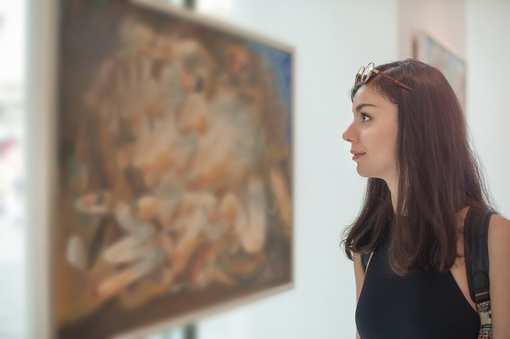History of the Franklin County Fair
The Franklin County Fair: As American as Apple Pie ~ by James Gildea, 2008
In 1848, the year when the Franklin County Fair first saw the light of day, local people - those who created the first Fair - believed that it would offer an important contribution to agricultural education at a time when America's social, political, and economic resources were under siege from a series of disasters that at times might have seemed almost Biblical in scale. Remarkable changes were sweeping the entire country at the time, and the agricultural education that could be provided by the Fair was viewed as critical to the survival of the people of Franklin County.
In exploring the history of the Fair this work offers an illuminating view of the people and the many historic events that brought the Fair into being, as well as the elements that have provided its 160-year longevity. The poet Robert Frost could just as easily have been writing about the mind-set of many in Franklin County during the mid-19th century when he wrote of the ‘'road less traveled; the road that made all the difference." As we'll see, in 1848 the road that made all the difference was the road to the Franklin County Fair. The story of the Fair is truly ‘'as American as apple pie."This opus has been ‘‘in the works" for more than 10 years, and represents an entirely new view of the genesis of the Fair in 1848. The people who give life to the first Fair didn't see themselves as simply ‘'creating an amusement" at the end of the harvest for the residents of a sleepy, backwater town in rural western Massachusetts, as some authors would have us believe.
Many other books, articles, and pamphlets have been written about the beginning of the Franklin County Fair, though few are truly accurate. Newspaper articles are usually written against a rapidly approaching deadline, with precious little time to research the facts of the story, and a reporter will often fill in the blanks by recycling past errors, or by quoting second or third-hand accounts that slowly and inevitably changed with the passage of time. But some authors appear to have simply neglected their homework. A historical profile of Greenfield, written several years ago, for example, dismissively states that the founders of the Fair in 1848 were simply ‘'trying to sell a few cows." That author attempts to "prove" this assertion by noting that the founders of the Fair were "businessmen," not farmers. This view couldn't be further from the truth; the historical framework surrounding the first Fair in 1848 was far more interesting, and far more vital than this; local people - businessmen and farmers - saw themselves as truly making history, not just "trying to sell a few cows."
The founders of the Fair were keenly aware of the truth of a statement, made more than 2,000 years ago by the Roman Senator, Cato: "There's no arguing with an empty stomach; it has no ears.” In 1848, when the first Fair began, America had become the destination for millions of migrants from the old World - men, women and children who were fleeing the extraordinary social and political upheaval brought on by a continent full of those "empty stomachs without ears." The potato blight that led to Ireland's famine was driven by almost non-stop rain from late 1845 to 1846, but that heavy rain affected all of Europe, from Ireland to Poland.
Like the 1789 French Revolution, famine-inspired social unrest in 1848 swept over Poland, France, Germany, Hungary, and Italy. In the midst of this chaos, Pope Pius IX had to escape while in disguise to avoid would-be assassins. Though all of these revolutions failed, the famine had already driven millions to leave their homeland for America, an exodus that had begun in earnest in 1847; by 1848 the number of German people escaping their dismal fate was probably as great as the number of Irish; perhaps greater. In that year, at the Port of New York alone, 10,000 immigrants were arriving every week from Europe. These new émigrés were the perceived audience for the agricultural education that the first Fair promised. They were woefully ignorant of the often extraordinary excesses of New England's climate, especially those that characterized the 19th century. That was bad enough, but they were also ignorant of what it took to survive on a farm in 1848. In the middle of the 19th century, a New England farmer probably couldn't have succeeded for very long without working oxen.
The first notice of the Fair - an ad in the Greenfield Gazette-Courier in early November, 1848, saw this fair as : "The commencement and opening wedge for the establishment of a permanent and annual cattle show in our county." But the extraordinary events of the time, along with the influx of millions of immigrants made clear the need for agricultural education. For local gardeners, or for those folks with a small "cottage industry" down on the farm, the Fair quickly became a vehicle to show off their agricultural innovations, or the newest breeds of sheep, or their skill at baking the best apple pie, or their quilt-making (traditions that continue today), or locally produced, special cheeses. Cattle were ubiquitous on New England farms in the 19th century; usually the heavy Devon breeds that also performed most of the labor. Devon oxen not only plowed or hauled heavy wagons, the cows gave a modest amount of milk every day to be used by the farm family, or made into butter or cheese to sell for cash or for barter.
According to Prof. Howard Russell in "A Long Deep Furrow: Three Centuries of Farming in New England," many single towns in western Massachusetts produced more than 450,000 pounds of cheese annually in the mid-1800's, all from a thriving cottage industry. (Russell's work can be found in most local libraries.) The point to be noted is that most of these small farms had only two or three cattle. Obviously, there was hardly a farm cottage in New England that didn't have a cheese press. On some small farms with only one or two cattle, even milking cows were pressed into service, plowing and hauling wagons, or "twitching" heavy logs out of the woods. The many stone fences found across New England were dragged there long ago by cattle. (This is an aspect of working cattle that could never be replaced by horses, few of which were found on New England farms at mid-century. On most small family farms the small number of cows and the lack of horses were both driven by the fact that most pastures were barely large enough for two or three cows; moreover, the hay necessary to feed these animals over the winter - and the space to store the hay - and any available labor at haying time were all limited. A horse was a luxury that most thrift-conscious New Englanders simply didn't allow themselves.)
Thus, the Franklin County Fair saw the first light of day in November of 1848 as a "cattle show" on the Greenfield Town Common, and has been held every year since, through world wars, dust bowl droughts, even stock market collapses. The Franklin County Fair bills itself as the oldest continuously operating county fair in America. For the past 160 years, the Fair has never failed, year after year, to bring together the entire community in a shared, positive, educational experience. But though it began as a "cattle show" on the Greenfield Town Common it quickly grew well beyond its initial limited focus, and also quickly outgrew the small space it occupied.
But that first Town Common site, literally a few steps from the 2nd Congregational Church, was historically important. The Fair on the Common appears to have been the inspiration for the Reverend Lorenzo Langstroth, pastor of that Church from 1845-1848. In 1851 Langstroth invented or improved the moveable frame beehive, the first true innovation in beekeeping in centuries, and a design still in wide use around the world. At that time, more than 5,000 acres of apple orchards could be found in the town of Colrain, just barely a few miles west of Greenfield along the Mohawk Trail, and Langstroth knew that without bees there would not be apples. Within its first few years, this country fair had proved its worth as a stimulus for education.
But there's yet another fascinating element in the genesis of the Fair, and that's Greenfield's participation in the Underground Railroad (UGRR). One of the putative "businessmen" who placed the first notice of the Fair in the Greenfield Gazette in 1848 was George Grennell, a man who, earlier that year, had attended the founding convention of the "Free Soil Party." This was an ad-hoc political action group, formed in 1848 to assure that those new territories in the U.S. Southwest that had been gained at the end of the Mexican-American War would not become slave states. Grennell appears to have been an abolitionist who regularly worked with local people in the Underground Railroad - a thriving enterprise in Greenfield at mid-century. One of the people that Grennell worked with was Amos Newport, a man written about in a 1903 edition of the Greenfield Recorder with this headline : "Local Fair Owes Its Start To Old Negro." (That article can be found at the Museum on the grounds of the Franklin County Fair.)
Amos Newport was the 77-year-old grandson of a man who had been a slave during the 18th century to Joseph Billings, a selectman in Hatfield. Newport's contribution to the fair's inception has been obscured by time, but history suggests he was, at the very least, the instigator for the Fair, as well as being a ‘'conductor" on the UGRR. Newport's UGRR activity is suggested by several converging lines of evidence. For example, by1848 Newport's childhood home in Hatfield (the former Billings residence) had become a "safe house”on the Underground Railroad. One of Newport's nicknames was "The General," a name also used in describing Harriet Tubman, perhaps the most noted "conductor" on the UGRR. As a member of this conduit for escaped slaves in Franklin County, Newport no doubt saw the Fair's focus on education as appropriate and useful for escaped slaves, who, along with immigrants from Europe, if they were to be part of this experiment called America, they had to learn how to survive.
In 1848 the founders weren't simply "selling a few cows;" they indeed saw themselves as "making history," a history celebrated every year for the past 160 years as the Franklin County Fair. But take a deep breath; this introduction offers only the barest outline; there's much more to the story.






